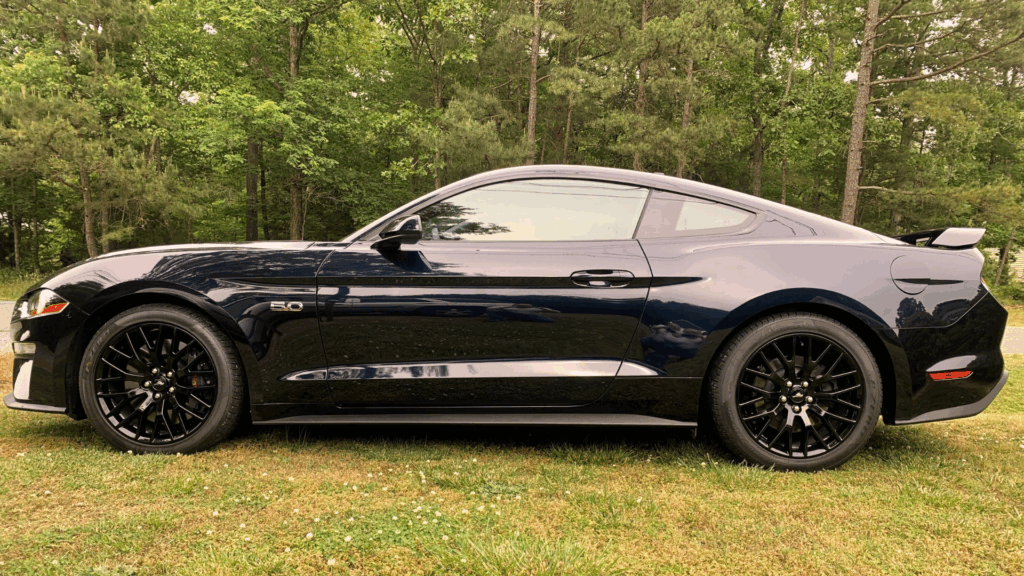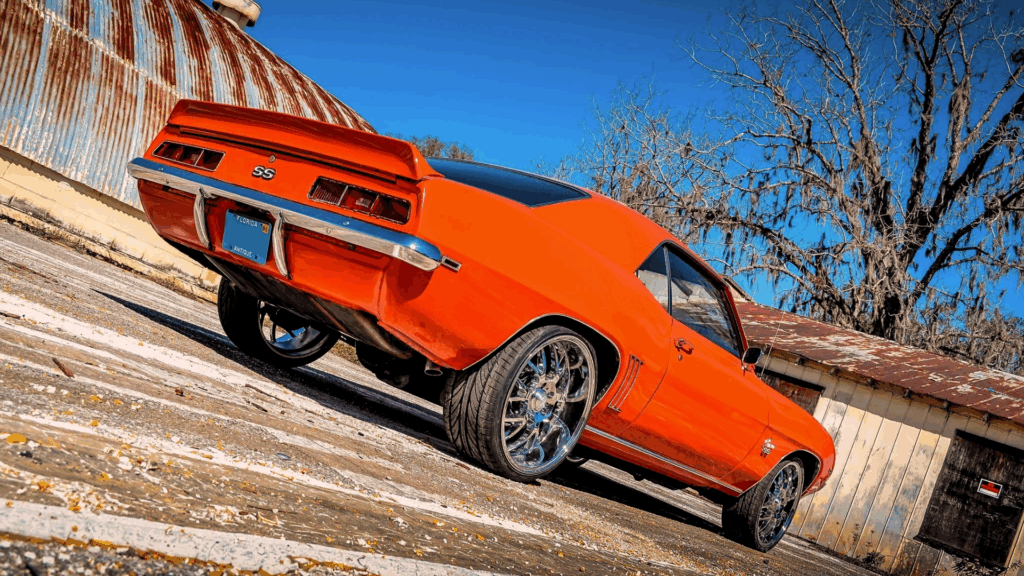Wheels can totally change a car’s appearance. From sleek sports cars to rugged off-roaders, the right set of wheels makes a massive difference in how a vehicle looks and performs.
Staggered wheel fitment is a popular modification that catches the eye of car enthusiasts, but many people don’t fully understand what it means. Are you curious about how different wheel sizes can change your ride?
In this post, I’ll break down everything you need to know about staggered wheel fitment:
- What exactly is staggered fitment?
- Pros and cons of this setup
- How to choose the right wheel configuration?
I’ll help you understand this complex topic in simple terms. If you’re a car lover or just want to look more informed at the next car meet, this guide will give you the insider knowledge you need.
What Is Staggered Wheel Fitment?
Staggered wheel fitment means the front and rear wheels on a vehicle are different sizes – usually, the rear wheels are wider than the front.
This setup is often used on sports cars and performance vehicles to improve traction, handling, and overall appearance.
The wider rear tires help deliver better grip during acceleration, especially on rear-wheel-drive cars.
The front wheels remain narrower to allow for easier steering and turning. Staggered setups can give a car a more aggressive, sporty look.
However, this type of fitment isn’t ideal for all vehicles. It can make tire rotation more difficult, and replacing tires might cost more since different sizes are needed. It’s best suited for cars built with performance in mind.
If you’re thinking about staggered wheels, make sure your car’s suspension and drivetrain are compatible. Always check with a professional or your vehicle manual before making changes
Pros and Cons of Staggered Fitment
bhbyy
Every car enthusiast knows that wheels can make or break a vehicle’s performance and look. Staggered fitment is a modification that changes your car’s wheel setup, with different sizes front and rear.
| Pros | Cons |
|---|---|
| Better Rear Traction | Tire Rotation Challenges |
| Powerful cars get serious grip. My sports car feels like it’s glued to the road during hard acceleration. | You can’t swap tires front to back. This means uneven wear becomes a real problem. |
| Aggressive Look | Higher Maintenance Costs |
| Turns heads wherever you go. Your car looks meaner and more athletic. | Tire replacements get expensive. Since rear tires are different, you’re looking at pricier maintenance. |
| Improved Handling | Weather Limitations |
| Reduces understeer. Your car feels more balanced and responsive in corners. | Not great in snow or wet conditions. You’ll need a careful setup to maintain safety. |
| Performance Boost | Limited Flexibility |
| Gives rear-wheel-drive cars extra stability under acceleration. | Less adaptable to different driving conditions. |
Pro tip: Before committing, consider your driving style and local weather. What works for a track car might not be ideal for daily driving.
How to Choose the Right Staggered Fitment?
Selecting the perfect staggered wheel setup is like finding the right pair of custom-fit shoes for your car. It’s not just about looks, it’s about performance, compatibility, and making sure every component works together seamlessly.
- Know What Your Car Can Handle: Not every car works well with staggered wheels. Check your owner’s manual for recommended sizes, weight limits, and any warnings before making changes.
- Measure Carefully Before Buying: Wheel and tire sizes need to be exact. A small mistake can cause big problems. If you’re unsure, use a professional wheel fitment calculator or ask a tire expert.
- Pay Attention to Offset and Clearance: Offset affects how the wheel sits in the wheel well. If it sticks out too far, it might rub. If it’s too far in, it can affect handling. Balance is key.
- Think About Suspension Changes: If you’ve changed your suspension or plan to, staggered wheels can affect how your car handles. You may need an alignment or small adjustments to keep things running smoothly.
- Plan for the Extra Cost and Care: Staggered setups cost more, especially when it comes to tires, alignments, and upkeep. You may not be able to rotate tires easily, so think ahead before committing.
Which Cars Typically Use Staggered Fitment?
Staggered wheel setups aren’t just a random trend; they’re a performance statement for specific types of vehicles. Some cars are born ready to rock this configuration, while others get customized by passionate enthusiasts.
1. Factory-Fitted Performance Machines
Some cars roll out of the factory with staggered wheels already installed. These are the superstars of performance driving. BMW M series leads the pack.
When I first saw an M3, I knew it was something special. Chevrolet Camaro and Ford Mustang also love this setup. Mercedes-AMG models? They’re basically staggered wheel royalty.
2. Sports Car Territory
Performance is the name of the game. Rear-wheel-drive sports cars benefit most from this configuration.
Imagine a Porsche 911 or a Nissan GT-R – these machines are built to show off staggered wheels. They’re not just about looking good. It’s about maximum grip and handling.
3. Aftermarket Modification World
Car enthusiasts love to customize. Many take their stock rides and add staggered wheels for that extra edge. It’s like giving your car a custom suit, tailored to perfection.
You’ll see this trend in Japanese sports cars, American muscle cars, and European performance vehicles.
4. Not Just for Pros
Don’t think this is only for professional racers. Weekend warriors and car meet enthusiasts love staggered setups, too. It’s about expressing your style and getting that extra performance kick.
Staggered Tires vs. Non-Staggered Tires
Choosing between staggered and non-staggered tire setups is like picking between a specialized sports car and a reliable sedan.
Each has its strengths, and the right choice depends on your specific needs, driving style, and vehicle type.
| Aspect | Staggered Setup | Non-Staggered (Square) Setup |
|---|---|---|
| Basic Definition | Wheels and tires differ in size front and rear | Identical tire sizes all around |
| Handling Characteristics | Better rear-wheel traction | More balanced handling across all wheels |
| Tire Wear | Uneven wear, harder to rotate | Even wear, easy tire rotation |
| Maintenance Cost | More expensive | Less costly to maintain |
| Best Suited For | Rear-wheel-drive performance cars | Front-wheel-drive and all-wheel-drive vehicles |
| Performance Pros | Enhanced acceleration grip | Consistent performance in various conditions |
| Practical Considerations | Limited tire replacement options | Flexible tire replacement and maintenance |
Pro tip: Your car’s drivetrain matters. Front-wheel-drive cars typically love the square setup. Rear-wheel-drive performance cars? They might prefer the staggered approach.
Which Tire Setup Should You Choose?

Choosing the right tire setup is a lot like picking the right shoes—you need something that fits your lifestyle. I’ve seen people waste money by not thinking it through.
If you drive every day, a square setup (same size tires on all wheels) is probably your best bet. It’s budget-friendly, handles well in most conditions, and works great in winter. Plus, you can rotate the tires to extend their life.
For car lovers who drive rear-wheel sports cars and want top performance, staggered wheels (wider tires in the back) might be a better option. They look great and help with traction, but they cost more and require extra maintenance.
Before deciding, think about:
- Driving style – Are you more casual or performance-focused?
- Budget – Can you afford higher costs down the road?
- Climate – Do you deal with snow, rain, or mostly dry roads?
Pick what’s right for your car and your needs, not just what looks cool.
Conclusion
Wheel fitment isn’t rocket science, but it’s not a one-click solution either. Staggered setups can change your ride, giving it extra grip and a killer look.
But the truth is that what works for one car might be a disaster for another.
Your vehicle is unique. Its performance, handling, and style depend on finding the right wheel configuration. Don’t just follow trends.
Take time to understand your car’s specific needs. Check the manufacturer’s specs. Talk to a professional who knows your vehicle inside and out.
When in doubt, ask an expert. A 15-minute conversation with a tire specialist can save you thousands in potential mistakes. Your car is an investment – treat it right.
Ready to roll? Make a smart choice. Your car will thank you.


